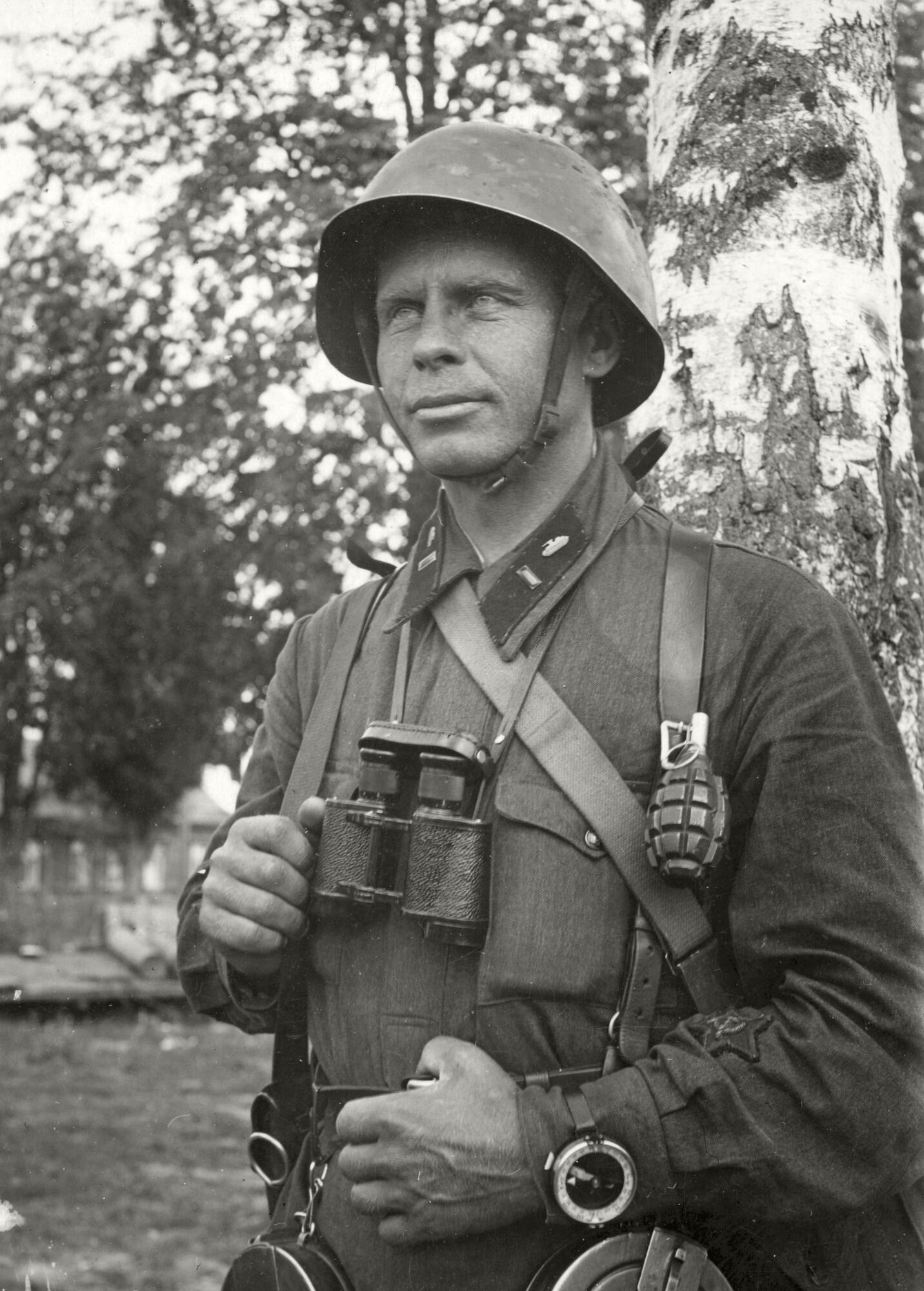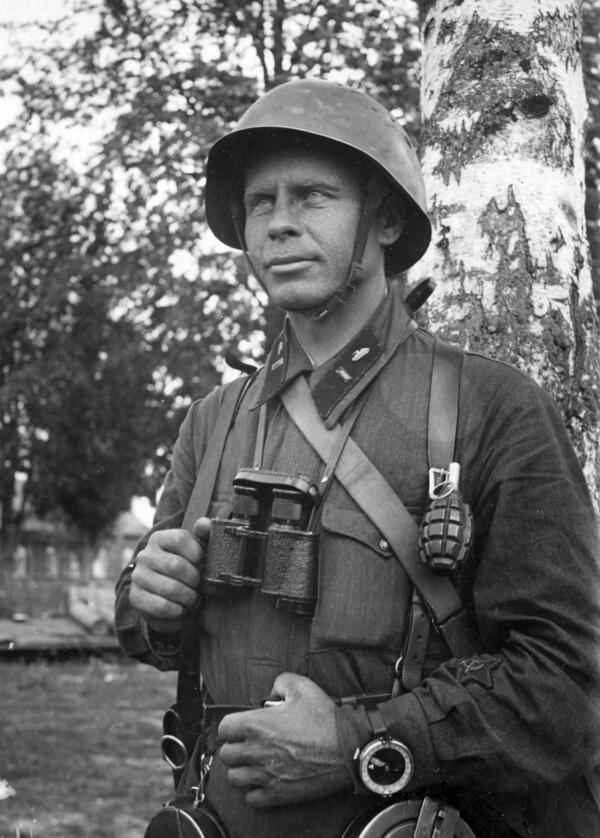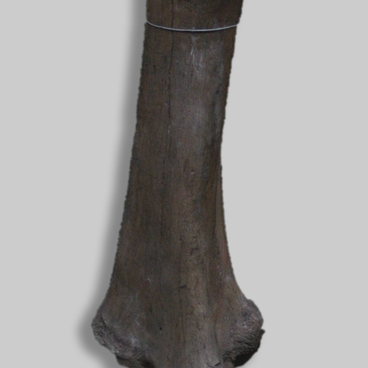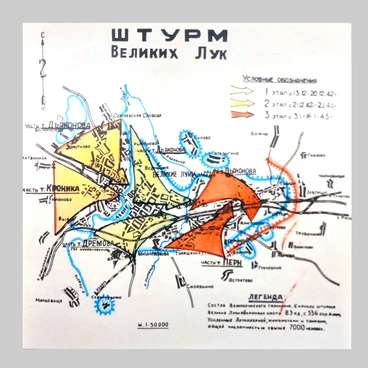In mid-July 1941, the headquarters of the 22nd Army arrived in VelIkiye LUki. The defense of the city from the Nazi invaders was entrusted to the 29th Rifle Corps, which operated together with the people’s volunteer corps of the city.
On July 18, under the onslaught of the enemy, after two days of stubborn fighting, the Red Army abandoned Velikiye Luki, but already on July 22, after a regrouping of forces, the city was liberated. Velikiye Luki was the third city in Russia to be liberated from the Nazi occupiers at the initial stage of the war on the Eastern front.
Further repeated attempts of the Nazis to seize Velikiye Luki again were unsuccessful. For more than a month, despite a significant superiority in forces, the enemy could not prevail over the Red Army and the volunteer corps defending the city. The soldiers of the 48th Tank Division and of the 179th Rifle Division and the people’s volunteer corps did not retreat. On some days the city’s defenders fought off up to seven attacks a day. Since July 30, the 48th Tank Division mainly operated as infantry, since only 11 out of 85 tanks were left.
In August 1941, the positions of the 48th Tank Division were visited by the front-line photojournalist for the newspaper of the Western Military District Krasnoarmeyskaya Pravda Mikhail Savin, who had been at the forefront since the first days of the war. One of the people captured by Savin’s camera in the Velikiye Luki district was Viktor Tonkoshkurov, commissar of the 48th Detached Battalion of the 48th Tank Division.
On the back of the photograph, taken on August 7 or 8, 1941, there is a writing on several lines.
On July 18, under the onslaught of the enemy, after two days of stubborn fighting, the Red Army abandoned Velikiye Luki, but already on July 22, after a regrouping of forces, the city was liberated. Velikiye Luki was the third city in Russia to be liberated from the Nazi occupiers at the initial stage of the war on the Eastern front.
Further repeated attempts of the Nazis to seize Velikiye Luki again were unsuccessful. For more than a month, despite a significant superiority in forces, the enemy could not prevail over the Red Army and the volunteer corps defending the city. The soldiers of the 48th Tank Division and of the 179th Rifle Division and the people’s volunteer corps did not retreat. On some days the city’s defenders fought off up to seven attacks a day. Since July 30, the 48th Tank Division mainly operated as infantry, since only 11 out of 85 tanks were left.
In August 1941, the positions of the 48th Tank Division were visited by the front-line photojournalist for the newspaper of the Western Military District Krasnoarmeyskaya Pravda Mikhail Savin, who had been at the forefront since the first days of the war. One of the people captured by Savin’s camera in the Velikiye Luki district was Viktor Tonkoshkurov, commissar of the 48th Detached Battalion of the 48th Tank Division.
On the back of the photograph, taken on August 7 or 8, 1941, there is a writing on several lines.
Presumably, its author was Tonkoshkurov himself, who tried to convey the mood of the Red Army soldiers: ‘V. Luki. The Birch Grove is a re[al] artillery duel, the Germans are throwing lots of mines and shells at [us], a sea of metal is boiling around… the earth is shaking… and we are fearle[s[sly preparing for a counterattack’.
At the end of August, Viktor Tonkoshkurov was able to leave the encirclement, and in October he was seriously wounded and concussed. Later Tonkoshkurov served as deputy head for political affairs of the 3rd Saratov Tank School. During the defense of Velikiye Luki, he received letters from the city of Kuybyshev from his wife, son and neighbors. In 1979, Viktor Tonkoshkurov donated a collection of letters to the Velikiye Luki Museum of History and Local Lore.
At the end of August, Viktor Tonkoshkurov was able to leave the encirclement, and in October he was seriously wounded and concussed. Later Tonkoshkurov served as deputy head for political affairs of the 3rd Saratov Tank School. During the defense of Velikiye Luki, he received letters from the city of Kuybyshev from his wife, son and neighbors. In 1979, Viktor Tonkoshkurov donated a collection of letters to the Velikiye Luki Museum of History and Local Lore.



